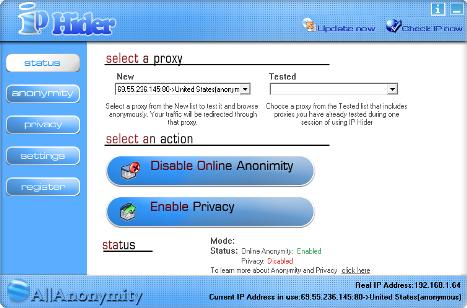
A reverse proxy can compress outgoing files, cash content and improve website performance. Reverse proxies can be used for monitoring suspicious activity, preventing data breach and DDoS attacks, and controlling unexpected traffic spikes. Reverse proxies are able to distribute incoming traffic across servers in a network so that servers’ resources are not depleted. Here are some benefits of using reverse proxy: The response from the server returns to the client through the reverse proxy, making it appear as if the proxy server handled the request itself. This type of proxy accepts requests from clients and sends them to some server behind it. Reverse proxyĪ reverse proxy, in contrast to forward proxy, is placed between clients and origin servers. The proxy server then sends this response back to the user. The web server sends a response to the proxy server. If the proxy allows the user's request, it forwards the request to the web server through the firewall. Forwarding proxies are configured to allow or deny a user's request to access web content through the firewall. The client asks its internal network server to forward a request to the internet. If you don’t want to put yourself at risk, buy a proxy service from a trustworthy provider. Geoblocking cannot rely on your IP, because an anonymous proxy doesn’t pass it.Īnonymous proxies can be unsafe and may collect and sell users data.When you browse the Internet with an anonymous proxy, all your traffic goes through the proxy server, which strips away your IP address. But in this case, the user’s online activity is not anonymous because his/her real IP address is transmitted in the X-Forwarded-For (XFX), Forwarded or X-Real-IP headers.Īn anonymous proxy server, or the anonymizer, is the opposite of a transparent proxy server. This option helped a lot in saving bandwidth and improving Internet connection speed, but the widespread use of HTTPS makes it lose its relevance.Īlso, the term ‘transparent proxy’ is used to denote a remote proxy server, which redirects requests, and, for example, can help to unblock access to websites. The transparent proxy server checks outgoing traffic and if the requested content is present in the cache, the proxy server returns it to the client without contacting the remote server. Transparent proxies can also be used for logging the online activity of the users inside the network and tracking visited websites. Libraries and different public organizations might use transparent proxies for the same purpose. With transparent proxies organizations might block access to content that is not relevant to employers' work, for example, social media platforms. Transparent proxies are set up by the network operator, not by the user, and are typically used for: They send a request to a web server, and it’s shown as coming directly from the user. Transparent proxies do not hide any user-identifying information. There are different protocols that a proxy could use, depending on the type of application you're using, and they offer different levels of security. Reverse proxies are used by service providers to improve website performance (by using caching) and balance load between servers. Modern proxy servers also can also operate as web filters and firewalls and protect network resources. In this case, the user's computer does not communicate with web services or websites directly, this is performed by a proxy server, which applies as a middleman. Similarly, replies are sent back to the proxy server and then to the user. All user requests first go to a proxy server, which evaluates the request and forwards it to the Internet. The definition of the word "proxy" means a person who is authorized to act for another, and a proxy server acts on behalf of the user. VPNs and proxies offer different levels of security and privacy and support different protocols. So to the website, it looks like you're connecting from the server, and they don't know anything about your real location.īut that's where the similarities end. Each one acts as a middleman: you establish a connection with a proxy or VPN server, and then that connection forwards your request to a website.

For example, both solutions hide your IP address so that no one can trace it.


On the surface, they seem to be very similar. There are different methods for doing so, but the most common is using a VPN or a proxy server. In the digital era, where Big Data is the most valuable resource of the 21st century, it’s necessary to protect your virtual identity.


 0 kommentar(er)
0 kommentar(er)
